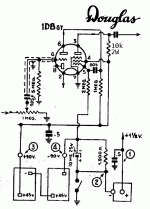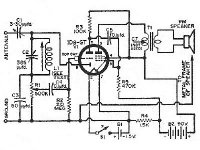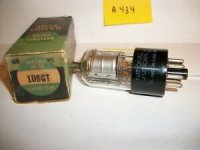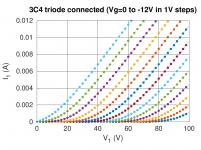If you're going to stay in the same chassis and apply >50 volts to the output stage, the OPS will need to be redesigned. The existing OPS assembly with a single VFET and a single MOSFET and an aluminum heat spreader, won't be able to dissipate all the extra heat. You might have to deploy a much more elaborate heatsink arrangement, perhaps involving fans or water cooling. And you'll need new front end cards capable of swinging more than 60 volts peak-to-trough, to drive the (voltage_gain < 1) VFET follower.
Or you might switch to a push-pull OPS which cuts dissipation roughly in half, but that's probably going to jettison the VFET. Most of the FirstWatt push pull amps run with about 48V of total supply, in a roughly 3U chassis, so a 50+ volts DIY push pull seems doable, especially with 5U tall heatsinks.
Fun fact: the Edcor PC600/15K is rated 5Vrms maximum input. That's 25Vrms output, which is 70.7 volts peak-to-trough. After than: find another way to get voltage gain.
_
Or you might switch to a push-pull OPS which cuts dissipation roughly in half, but that's probably going to jettison the VFET. Most of the FirstWatt push pull amps run with about 48V of total supply, in a roughly 3U chassis, so a 50+ volts DIY push pull seems doable, especially with 5U tall heatsinks.
Fun fact: the Edcor PC600/15K is rated 5Vrms maximum input. That's 25Vrms output, which is 70.7 volts peak-to-trough. After than: find another way to get voltage gain.
_
Attachments
Last edited:
I am bit confused because I see some contradictions.
CCS loaded 3S4 (or any other good triode...surely not the ECC82) with LED or SiC cathode bias + source follower driving the VFET output stage.
It doesn't come any simpler and linear than that. No transformer is necessary.
Tube rolling is for people that really cannot do anything else. A "smart" idea vendors introduced to sell stuff to them.....but really, results are random!🙂
Anyway, tube rolling involving just plug and play can only be done with traditional stuff (i.e. passive loads and bias). One could make the voltage gains stage like that but there is a trade-off, as always:
Option 1) Voltage supply is going to be higher. A lot higher if excellent linearity is necessary.
Option 2) Otherwise, if the power supply cannot be higher one has to use a transformer. Despite all garbage people write about transformers this can work really well but it won't be cheap and tube selection is a lot more limited....
CCS loaded 3S4 (or any other good triode...surely not the ECC82) with LED or SiC cathode bias + source follower driving the VFET output stage.
It doesn't come any simpler and linear than that. No transformer is necessary.
Tube rolling is for people that really cannot do anything else. A "smart" idea vendors introduced to sell stuff to them.....but really, results are random!🙂
Anyway, tube rolling involving just plug and play can only be done with traditional stuff (i.e. passive loads and bias). One could make the voltage gains stage like that but there is a trade-off, as always:
Option 1) Voltage supply is going to be higher. A lot higher if excellent linearity is necessary.
Option 2) Otherwise, if the power supply cannot be higher one has to use a transformer. Despite all garbage people write about transformers this can work really well but it won't be cheap and tube selection is a lot more limited....
Simple is good if it makes a linear circuit.
I had never heard of the 3S4 prior to seeing it mentioned in this thread. I don’t know how easy it is to find. There were a few unusual and expensive tube mentioned earlier, perhaps not completely seriously. I suggested tube rolling as a way to scratch that particular itch. Not too serious about that either.
This front end card doesn’t necessarily need a transformer to drive the output stage, but one could be a good way to support both positive and negative outputs, and maybe do some impedance matching.
I have no problem working with higher voltages and transformers. That ST-70 I mentioned has over 500V at the center tap of the output transformers, and the front end runs at 325V.
I had never heard of the 3S4 prior to seeing it mentioned in this thread. I don’t know how easy it is to find. There were a few unusual and expensive tube mentioned earlier, perhaps not completely seriously. I suggested tube rolling as a way to scratch that particular itch. Not too serious about that either.
This front end card doesn’t necessarily need a transformer to drive the output stage, but one could be a good way to support both positive and negative outputs, and maybe do some impedance matching.
I have no problem working with higher voltages and transformers. That ST-70 I mentioned has over 500V at the center tap of the output transformers, and the front end runs at 325V.
Simple is good if it makes a linear circuit.
I had never heard of the 3S4 prior to seeing it mentioned in this thread. I don’t know how easy it is to find.
I also had not heard about the 3S4 and its cousins. They are actually quite easy to find! I found some at a (sort-of) local vendor for 5 bucks (Security Check).
I don't have a lot of experience with directly heated tubes. What are the important aspects for the filament supply? Does it have to be clean DC? Must the filament supply be floating?
If floating is not necessary, could the 3S4 filaments be supplied from the 36 VDC rails of the VFET amp via suitable dropping resistors like this:
36V --> resistor1 --> filament pin 1
36V --> resistor2 --> filament pin 2
filament-center --> cathode resistor (or LED or whatever bias) --> GND
If the filament supply must be floating, would a simple isolated DC-DC converter be good enough? How about one that converts the 36 VDC rails to +/- 15 VDC (floating), which then feeds the 2.8 V filament via suitable dropping resistors?
Congratulations on finding such a low price vacuum tube! $5 per tube is the same price as each of the audiophile grade opamp chips from Burr Brown, used in the Marauder front end card. (OPA2134, OPA552). I have no idea how much it costs to buy a PCB mount tube socket; the opamp DIP-8 sockets are $0.54 each from Mouser, $0.02 each from eBay.
If your DC to DC converter uses inexpensive parts and a streamlined minimalist design, you might be able to beat Marauder on BOM cost. That would be amazing! You could click on the "one click" Mouser shopping cart to get today's total price per Marauder, just scroll to the bottom.
_
If your DC to DC converter uses inexpensive parts and a streamlined minimalist design, you might be able to beat Marauder on BOM cost. That would be amazing! You could click on the "one click" Mouser shopping cart to get today's total price per Marauder, just scroll to the bottom.
_
Last edited:
...you may also want to look at ...
1D8-GT is $6, impressive for the price, not very popular, gives two sections for lots of open-loop gain and possible NFB (though this may be difficult with the pinout limits). The filament power is so low you get 100 hours (3 hours/night for a month) on one D-cell, maybe avoiding a 3rd power supply. Here is a snip from a radio, output converted to R-loaded. The coupling caps are barely big enough for 30Hz, you could go 4X bigger easily. The volume pot can be 100k for extended treble. The other resistors are good as they are, pending an actual build. 2nd image has alternate values to try. 3rd image shows a squat Octal with a kewl top-cap. (That's no-voltage Grid, not a shocking electrode.)
Attachments
Broskie’s 12VAC Aikido would fit the bill.....
New Aikido 12Vac PCB and part kits
But, If you are really going to do this then a single stage would be better because these devices / designs already have lot of distortion: that’s the point of the SIT.
New Aikido 12Vac PCB and part kits
But, If you are really going to do this then a single stage would be better because these devices / designs already have lot of distortion: that’s the point of the SIT.
I also had not heard about the 3S4 and its cousins. They are actually quite easy to find! I found some at a (sort-of) local vendor for 5 bucks (Security Check).
I don't have a lot of experience with directly heated tubes. What are the important aspects for the filament supply? Does it have to be clean DC? Must the filament supply be floating?
If floating is not necessary, could the 3S4 filaments be supplied from the 36 VDC rails of the VFET amp via suitable dropping resistors like this:
36V --> resistor1 --> filament pin 1
36V --> resistor2 --> filament pin 2
filament-center --> cathode resistor (or LED or whatever bias) --> GND
If the filament supply must be floating, would a simple isolated DC-DC converter be good enough? How about one that converts the 36 VDC rails to +/- 15 VDC (floating), which then feeds the 2.8 V filament via suitable dropping resistors?
The filaments must be on separate isolated supplies otherwise you will have crosstalk. And yes the supply should be very clean.
3S4 and 3Q4 are rather common and affordable. The EU equivalents are DL92 and DL95, respectively. And there are also other tubes in the DL9X family that would be suitable.
As already noted, filaments need to be separated because they also act as cathodes, unlike indirectly heated tubes.
The current regulation removes the possibility of IMD with power supply.
Rod Coleman makes affordable mini-boards for this that can be adapted for any directly heated tube and he is very supportive in this forum....
As already noted, filaments need to be separated because they also act as cathodes, unlike indirectly heated tubes.
The current regulation removes the possibility of IMD with power supply.
Rod Coleman makes affordable mini-boards for this that can be adapted for any directly heated tube and he is very supportive in this forum....
That all sounds very nice. Unfortunately, those do not seem to be available on this side of the pond.
Strange... where did you look? Epay has a bunch in the US, so I guess some of those tubes found their way across the pond since their introduction in the 1950s.
I prefer to buy this type of item from more stable retail outlets. Ebay sellers tend to be very temporary, and searches usually show a bunch of items that are not what I'm actually looking for.
I am looking for a source that will be around for a while. The VFET amp is going to eventually built in several versions, over a the next year or so.
I am looking for a source that will be around for a while. The VFET amp is going to eventually built in several versions, over a the next year or so.
Sure. I was just saying that these tubes DO exist on your side. Where did you look? Did you look for DL96, too?
I prefer to buy this type of item from more stable retail outlets. Ebay sellers tend to be very temporary, and searches usually show a bunch of items that are not what I'm actually looking for.
I am looking for a source that will be around for a while. The VFET amp is going to eventually built in several versions, over a the next year or so.
Of course, if you are in USA you better look for the US equivalent: 3S4, 3C4 and 3V4 pretty common and cheap there. You cannot expect to find massive stocks at every "official" vendor but normally you can find quantities of 10-20 easy and sometimes hundreds....
Thanks for that. I got better hits searching for 3S4 and 3V4. Looks like Antique Electronics Supply (tubesandmore.com) has a few of the compatible parts.
Interesting part, miniature 7-pin pentode, low voltage filament, and low plate voltage, as has been mentioned. Worth looking further into a design. I may try a couple alternatives and run performance and listening tests between them.
Interesting part, miniature 7-pin pentode, low voltage filament, and low plate voltage, as has been mentioned. Worth looking further into a design. I may try a couple alternatives and run performance and listening tests between them.
- Home
- Amplifiers
- Tubes / Valves
- Designing a vacuum tube front end card for the VFET DIY amp




